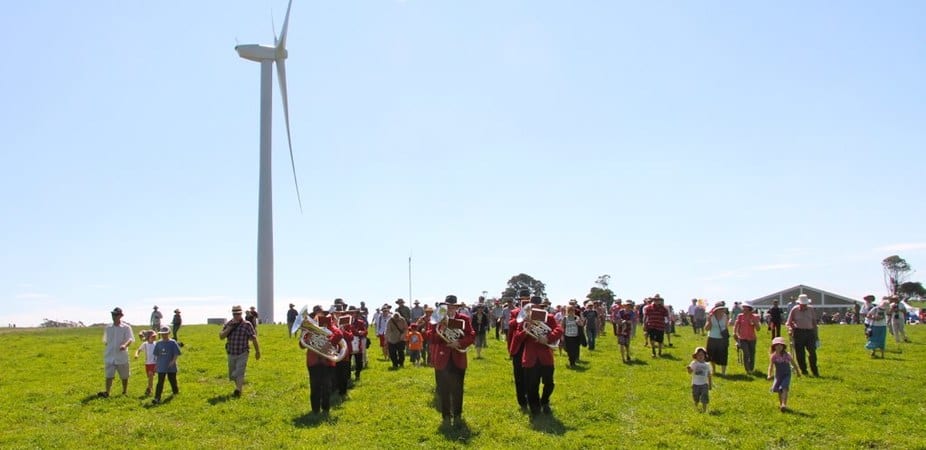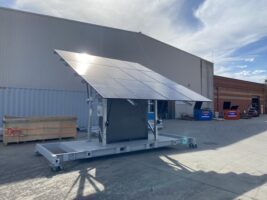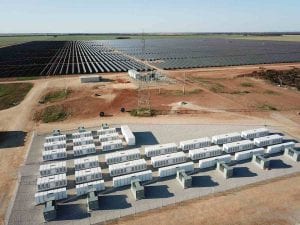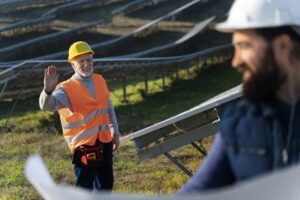
The Finkel review does not explicitly put community power on the agenda. But community energy entrepreneurship could help deliver Finkel’s recommendations — especially distributed and independent power systems.
Everyone seems to have a view about the review of Australia’s energy market by Australia’s chief scientist, Alan Finkel.
Dr Finkel’s policy recommendations attempt to pragmatically balance the interests of large, influential fossil fuel industry players with the necessary rapid transition to renewable energy.
But most who are concerned about global warming agree that Dr Finkel’s policy recommendations lack the ambition needed for Australia to become a responsible global leader on climate change.
Luckily for the planet, our transition to renewables is inevitable. And the Finkel recommendations, if adopted, will at least help people get on with the job and drive the transition.
The question is, who will benefit from this transition?
Community power is about ensuring people and planet benefit.
When I talk about community power I mean enterprises and systems that are owned by locals and designed with the community and the environment in mind.
Community power puts local values at the centre of the design process. That means procurement arrangements that create local jobs, local investment schemes that create dividends for local people, responsible business models that mandate emission reductions and enterprises that create energy citizens — who are the consumers and producers of energy.
So will Finkel’s recommendations help or hinder the growth of community power?
Finkel’s recommendations aim to fulfil four objectives: increased security, reliability, rewarding consumers and lower emissions.
Some recommendations may hinder small scale community power projects.
For example, recommendation 2.1 imposes a general obligation on new generators to demonstrate capacity of “dispatchable power”, meaning an ability to quickly generate power when needed. An extra expense and approval barrier may pose obstacles to smaller renewable energy project developers.
Similarly, recommendation 2.3, requiring all generators to have technical requirements, including frequency control, voltage and reactive power control, may restrict smaller community power groups without such technological capacity.
But the good news is the Finkel review may also open doors to new and exciting opportunities for community power, even if the review does not explicitly support them.
For example, the recommendation for greater policy attention to independent power systems and micro-grids could help bolster the body of evidence that is developing about the power and efficiency of distributed and independent power systems. Micro-grids provide a host of efficiency, collaboration and emissions reduction benefits — a group of 30 households using shared infrastructure can achieve 90 per cent energy independence at half the cost of a single household.
Other ideas, such as orchestrated energy networks and demand management services offer lots of scope for entrepreneurship, because of the technology and services required to ramp up these new energy services. The question for community power is who will own the next energy platforms and software services? Will the platforms be locally owned and designed, or will an Uber of the energy sector transform the system, exporting profits overseas?
Technology is amoral. It depends on the purpose and design of the technology as to whether it creates more problems than it solves.
Ownership of capital is also amoral. It’s the intentions and responsibilities of the owners of new enterprises that shape the world we all inhabit.
Innovative governance structures, missions, legal structures and ownership schemes can all help make sure new enterprises are built for people and planet instead of only institutional investors merely seeking profit. Enova Energy or the Nightingale Apartments are two examples of legal structures or open source models that require local ownership and participation.
Who will own the future technology of our energy system? Which technology will prevail and why?
While the Finkel review is no silver bullet, the outcomes should open up the entrepreneurial and policy space to allow governance structures and energy systems to create shared benefits and a fairer, cleaner energy system.
Kim Shore is a lawyer at the Sustainability Law Lab, a project of Environmental Justice Australia. The Sustainability Law Lab provides legal solutions for purpose-driven enterprises and non-profit organisations.










